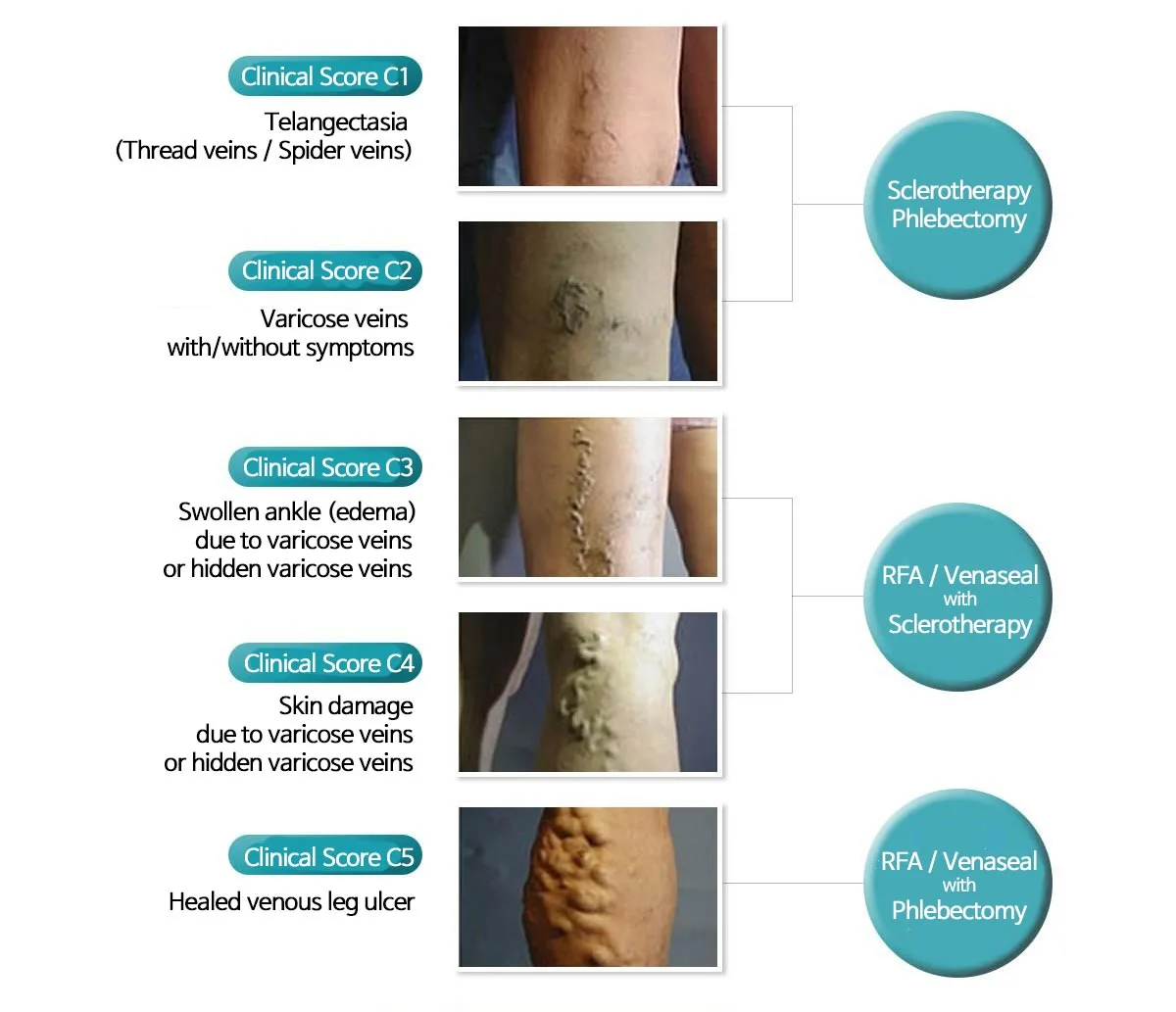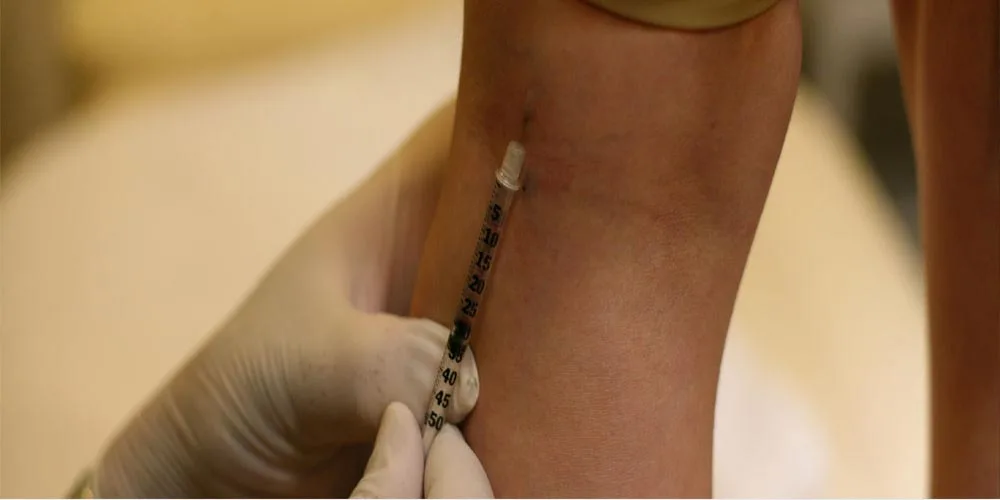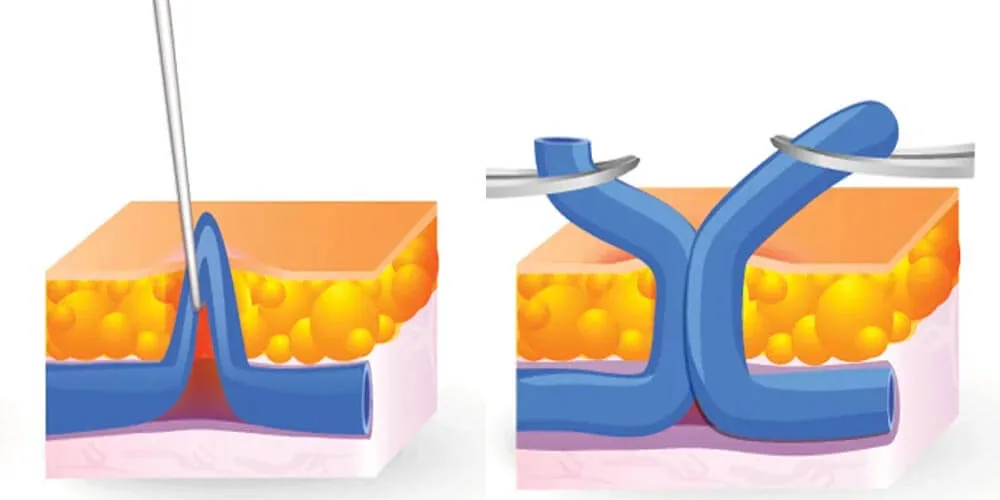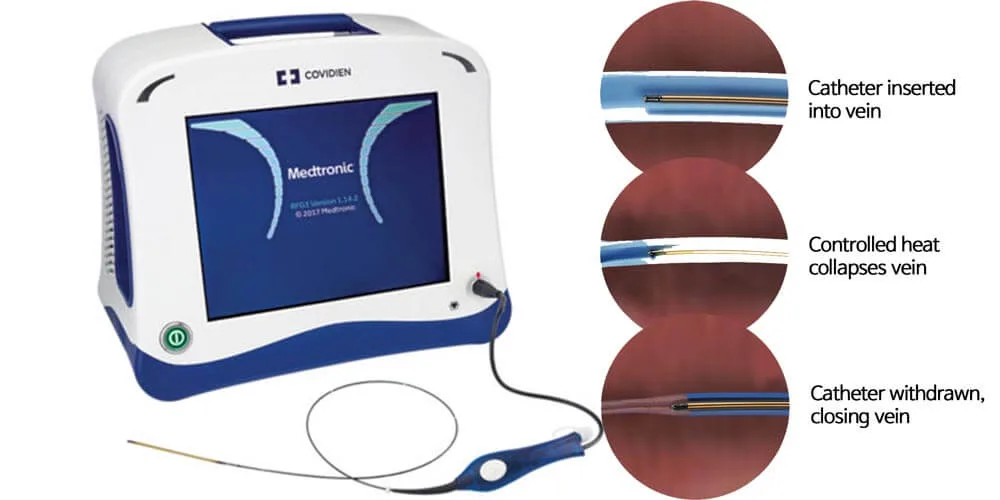APA ITU VARISES
Varises
Varises adalah pembuluh darah yang membesar dan bengkok yang terbentuk tepat di bawah permukaan kulit, paling sering di kaki dan pergelangan kaki.
Mereka berkembang ketika katup di dalam pembuluh darah melemah atau tidak berfungsi, menyebabkan darah menggenang daripada mengalir secara efisien kembali ke jantung.
Saat tekanan meningkat, pembuluh darah menjadi meregang, bengkak, dan terlihat terdistorsi.
Meskipun sering dianggap sebagai masalah kosmetik, varises terkadang dapat menyebabkan ketidaknyamanan, pembengkakan, dan, dalam beberapa kasus, komplikasi peredaran darah yang lebih serius jika tidak diobati.
Symptons of Varicose Vein
Varises sering terjadi dalam keluarga, dan risikonya meningkat seiring bertambahnya usia. Faktor-faktor seperti obesitas, kehamilan, atau pekerjaan yang membutuhkan berdiri lama dapat memberi tekanan tambahan pada pembuluh darah kaki, berkontribusi pada perkembangannya.
Varises biasanya muncul sebagai vena biru tua, bengkak, dan bengkok tepat di bawah kulit. Sementara beberapa orang tidak mengalami gejala, yang lain mungkin melihat ketidaknyamanan ringan hingga berat.
Gejala ringan:
- Perasaan berat, terbakar, sakit, atau lelah di kaki, yang dapat memburuk setelah berdiri atau duduk dalam waktu lama.
- Pembengkakan di kaki dan pergelangan kaki.
- Gatal di sekitar pembuluh darah yang terkena.
Gejala yang lebih serius:
- Pembengkakan kaki yang terus-menerus.
- Nyeri betis dan peningkatan pembengkakan setelah duduk atau berdiri dalam waktu lama.
- Perubahan kulit, termasuk perubahan warna, kekeringan, penipisan, atau peradangan.
- Penskalaan atau pembentukan luka terbuka.
- Pendarahan akibat luka ringan akibat kulit yang melemah.
Varises sering terjadi dan, dalam banyak kasus, bukan masalah medis yang serius. Namun, mengelola gejala sejak dini dapat membantu mencegah komplikasi dan meningkatkan kenyamanan.
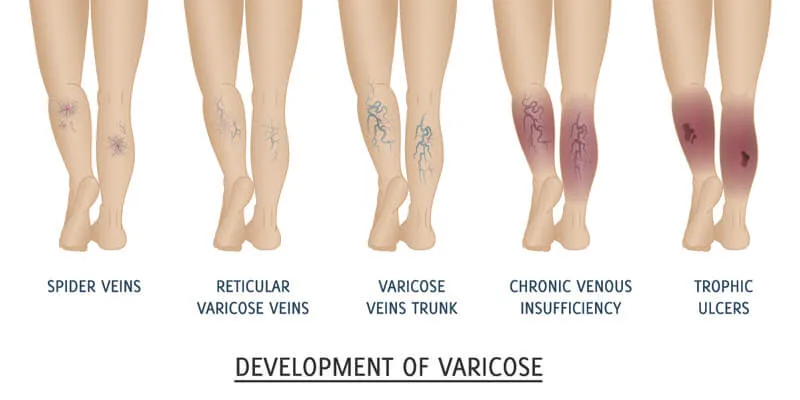
Diagnosis of Varicose Veins
Diagnosing varicose veins typically involves a physical examination and, if necessary, imaging tests to assess the condition of the veins and blood flow.
1. Physical Examination
A doctor will begin by visually inspecting the affected veins while you are standing or sitting. They may ask about symptoms such as leg pain, swelling, or discomfort, and review your medical history, including risk factors like family history, pregnancy, or lifestyle habits.
2. Doppler Ultrasound
If further evaluation is needed, a Doppler ultrasound is commonly used. This non-invasive test utilizes sound waves to visualize blood flow in the veins and detect valve dysfunction, blockages, or blood clots (deep vein thrombosis – DVT).
3. Venous Duplex Ultrasound
A more detailed version of Doppler ultrasound, this test provides both structural and functional assessments of the veins. It helps identify reflux (backward blood flow) and determine the severity of varicose veins.
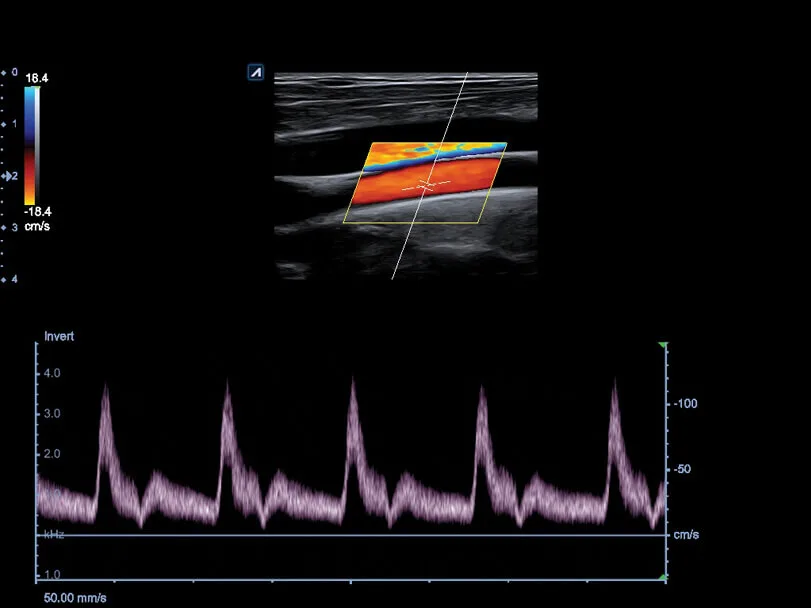
4. Additional Diagnostic Tests (If Necessary)
In rare cases, additional imaging tests such as venography (using contrast dye to highlight veins on X-rays) or MRI/CT scans may be used to evaluate more complex venous conditions.
When to Seek Medical Attention
Varicose veins are often harmless, but if you experience persistent pain, swelling, skin ulcers, or signs of deep vein thrombosis (DVT), seeking medical evaluation is crucial to prevent complications. Early diagnosis can help determine the best treatment options and prevent worsening symptoms.
Treatments for Varicose Veins
Varises adalah kondisi progresif, yang berarti mereka cenderung memburuk dari waktu ke waktu jika tidak diobati. Sementara perawatan medis dapat secara efektif mengelola gejala dan memperbaiki penampilan, pencegahan dan perubahan gaya hidup adalah aspek terpenting dari manajemen jangka panjang. Bahkan setelah perawatan, pasien harus mengadopsi kebiasaan sehat untuk mencegah kekambuhan dan menjaga sirkulasi vena yang baik.
1. Modifikasi Gaya Hidup: Kunci Pencegahan dan Keberhasilan Jangka Panjang
ince varicose veins develop due to poor circulation and increased pressure in leg veins, modifying daily habits is essential to both prevention and post-treatment care. Even if you undergo medical treatment, failing to change your lifestyle may lead to recurrence.
Essential Lifestyle Changes for Varicose Veins
-
Wear Compression Stockings
- Helps improve circulation by providing gentle pressure that supports vein function.
- Recommended for individuals who stand or sit for long hours.
-
Elevate Your Legs Regularly
- Raising your legs above heart level for 15–20 minutes several times a day reduces swelling and venous pressure.
- Especially important for those experiencing leg fatigue or swelling after long periods of standing.
-
Stay Active & Exercise Regularly
- Low-impact exercises like walking, swimming, and cycling strengthen calf muscles, which help pump blood back to the heart.
- Avoid sitting or standing for prolonged periods; incorporate movement into your daily routine.
-
Maintain a Healthy Weight
- Excess weight increases pressure on leg veins, worsening varicose veins and increasing the risk of recurrence.
- A balanced diet rich in fiber and antioxidants can support vascular health.
-
Avoid Prolonged Sitting or Standing
- If your job requires standing for long hours, shift weight between legs and take breaks to move.
- If sitting for extended periods, flex and extend your feet or stand up periodically to promote circulation.
-
Stay Hydrated & Eat a Vein-Friendly Diet
- Drinking plenty of water and consuming foods rich in flavonoids (citrus fruits, berries) can strengthen vein walls.
- Reduce salt intake to prevent fluid retention and leg swelling.
Prevention is key! Without lifestyle changes, even successfully treated varicose veins can return. Long-term commitment to these habits is essential for maintaining healthy legs.
2. Perawatan Medis untuk Varises
Jika varises menyebabkan ketidaknyamanan atau masalah kosmetik, prosedur invasif minimal dapat secara efektif mengobati kondisi tersebut. Prosedur ini biasanya dilakukan secara rawat jalan dengan waktu pemulihan minimal.
Prosedur Non-Bedah & Invasif Minimal
- Skleroterapi: Larutan kimia disuntikkan ke dalam varises kecil, menyebabkannya runtuh dan memudar seiring waktu.
- Endovenous Laser Ablation (EVLA) & Radiofrequency Ablation (RFA): Energi panas dikirim melalui kateter untuk menutup pembuluh darah yang sakit.
- Venaseal™ (Perawatan Perekat Medis): Perekat medis khusus disuntikkan ke dalam pembuluh darah untuk menutupnya, menghilangkan kebutuhan akan perawatan berbasis panas atau stoking kompresi pasca-prosedur.
Perawatan bedah (untuk kasus yang parah)
Dalam kasus lanjut, pembedahan mungkin diperlukan ketika perawatan invasif minimal tidak efektif.
- Flebektomi: Varises kecil dihilangkan melalui sayatan kecil.
- Pengupasan & Ligasi Vena: Varises yang lebih besar diikat dan diangkat melalui pembedahan.
Karena kemajuan dalam perawatan yang kurang invasif seperti Venaseal™, EVLA, dan RFA, operasi tradisional jarang diperlukan saat ini.
Sistem klasifikasi komprehensif untuk kelainan vena kronis (CEAP) & pengobatan

VARIABLE VARICOSE VEIN
Variable Treatments
VenaSeal
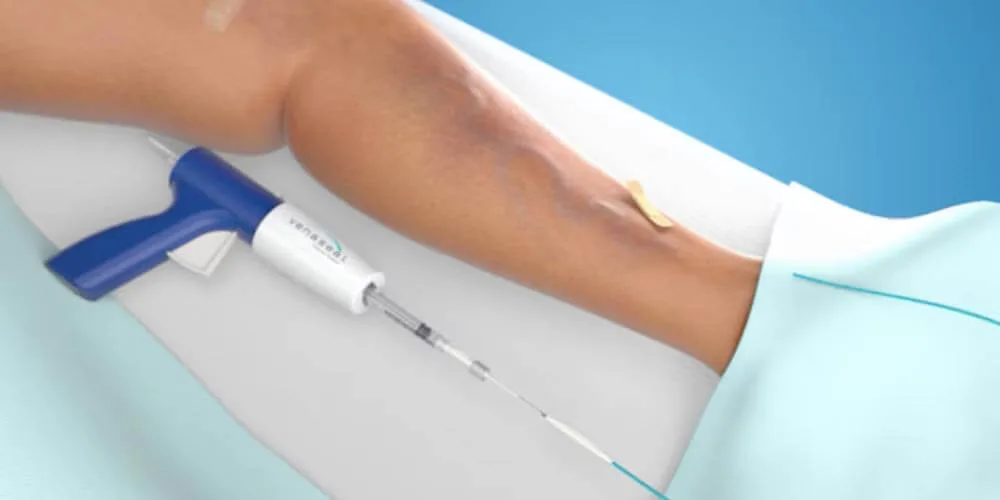
The Venaseal™ procedure utilizes a medical adhesive to effectively and permanently seal varicose veins without the need for heat-based energy.
- Minimally invasive with no need for tumescent anesthesia
- Suitable for various vein sizes, including the greater & lesser saphenous vein
- Immediate return to daily activities with minimal downtime
Before & After
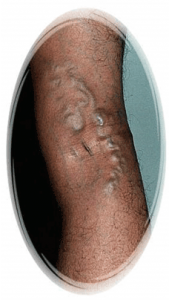
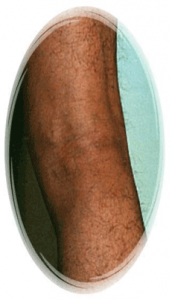
Pria 36 tahun, setelah flebektomi, 4 minggu kemudian

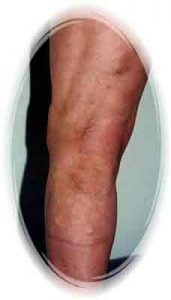
Wanita 62 tahun, setelah EVLT, 11 minggu kemudian

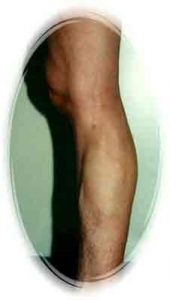
Pria 19 tahun, setelah phlebectomy & sclerotherapy, 6 minggu kemudian
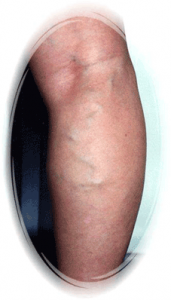

Wanita 50 tahun, setelah sclerotherapy, 8 minggu kemudian
The Importance Of Compression Stocking
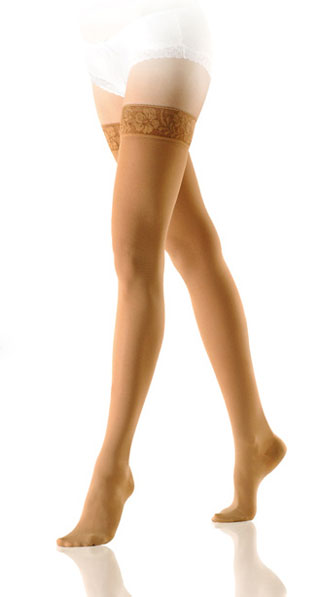
Compression Therapy for Varicose Veins and Lymphedema
Compression therapy involves the use of specialized compression stockings to effectively manage varicose veins and lymphedema, promoting better circulation and reducing swelling.
How Gradient Compression Works
Gradient elastic stockings, first developed in the early 1950s by an engineer and patient, remain the gold standard for managing chronic venous disease. These stockings apply graduated pressure, which is strongest at the ankle and gradually decreases up the leg. This controlled compression helps:
- Prevent excessive expansion of superficial veins.
- Reduce blood pooling and backward flow, minimizing congestion.
- Alleviate symptoms such as leg discomfort, swelling, and varicose veins.
The Importance of Prevention
When it comes to varicose veins, prevention and recurrence prevention are just as important as treatment. Even after medical intervention, consistent use of compression stockings can help maintain healthy circulation and reduce the risk of future vein problems.
Where to Buy
To ensure the best quality and effectiveness, we recommend purchasing compression stockings from Evita Clinic or trusted online retailers.
Why Prevention & Lifestyle Changes Matter
✅ Varicose veins are progressive – early prevention is crucial.
✅ Even after treatment, recurrence is possible without lifestyle modifications.
✅ Simple habits like leg elevation, compression stockings, and exercise can significantly reduce symptoms and prevent new varicose veins.
Taking control of your vein health through lifestyle changes and early intervention is the best way to ensure long-term success in managing varicose veins. Treatment can help, but your daily habits will determine the long-term outcome!



